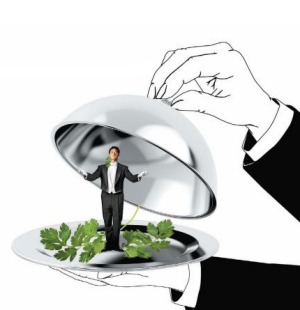
Glory: Noma, one of the best Restaurants with three Michelin stars and five Best Restaurant designations from the World’s 50 Best Restaurants, announced that it was closing for good.
The chef has cited the financially and emotionally unsustainable nature of cooking at such a high level. He’d been reckoning with that unsustainability since 2015, when an essay for Lucky Peach saw him publicly exorcising his own kitchen demons.
“Maybe the old way has worked so far,” he wrote, attempting to redeem his past as a kitchen screamer. “But in the long run, it burns people out.”
Are Chefs really happier on the other side?
That theory has borne out even more now that the pandemic has worsened the existing pains of cooking professionally and chefs have begun ditching fine dining for more casual, lower-stakes ventures.
Noma alum Kim Mikkola now runs a Helsinki chain of fried-chicken shops called KotKot.
D.C.’s Michelin-starred Komi ditched its tasting menu and converted its operations to a takeout joint called Happy Gyro.
Happy Gyro chef-creator Johnny Monis feels the same. “We haven’t connected with fine dining for a long while,” he says. “It’s not where our hearts are, or how we enjoy eating. Over the past few years, we’ve tried to create a place where we can pursue whatever stokes our passion and gets us and our team excited. A place that energizes us instead of depletes us.”
That’s not to say that a great cheeseburger or gyro is artless or financially painless to produce. But imagine a pizza joint forcing an employee to spend three straight months tweezing dried jam into the shape of a beetle the way Noma did to intern Namrata Hegde.
Hegde shared her experience. she was forbidden from either speaking or (especially) laughing in the kitchen.
Would a sandwich shop forbid its staff from laughing in its pursuit of greatness? Maybe, but the fact that it probably isn’t striving for a spot on the 50 Best Restaurants list makes the possibility seems remote.
Are Chefs really happier on the other side?
Meanwhile, classically trained ex-chef and current bartender Jake Vorono left fine dining because he “completely lost touch with the people I was cooking for and that killed the passion for me.
My friends couldn’t eat the food I was cooking, my family couldn’t, I had nothing in common with the clientele, and that made cooking feel like a sham.” But while it was hard on his humanity, it wasn’t the technique-heavy cuisine that weighed on him.
“Working in fine dining was a massive creative outlet,” he continues. “I truly loved the learning experience of advanced culinary techniques like modernist techniques, ‘molecular gastronomy,’ and sous vide.” Vorono now works at the Seattle bar Bait Shop and says he’s much happier.
Food aside, fine dining restaurants also burn their workers out in more straightforward ways.
Vorono agrees. “Young cooks have a hard time these days realizing that a casual kitchen is a really superior place to learn some solid technique,” he says. “There’s a lot of free time to dive into research and study, and a less rigorous workload that gives you some freedom to play around with the menu a little more.”
Do what makes you happy
Johnny Monis also notes what a relief that freedom is after years in the high-stakes world of ultra-fine dining. Now he and his staff are cooking whatever they feel like cooking, without the pressure to check off certain upscale-experience boxes.
“I’ve met so many interesting, inspiring, talented people from all over the world,” she says. “The ingredients you get to work with are also insane.
Some serve more affordable tasting menus in less uptight settings, others offer employees the health benefits and paid time off that chefs and cooks haven’t historically gotten.
It’s striking, though, how many chefs leave high-end environments without leaving the industry altogether. The abuse and work-life balance in upscale kitchens can be disillusioning, but never the experience of feeding people. Maybe it doesn’t matter whether you’re tweezing, foaming, frying, shaping meatballs, or playing with your food in one of infinitely many other ways. What matters is that you still feel gratified when you feed someone a plate of your food, whatever it looks like.
Also read: Human Brain: Know How Experts Plan Their Diet To Keep Their Brain Healthy
To read more such news, download Bharat Express news apps





















